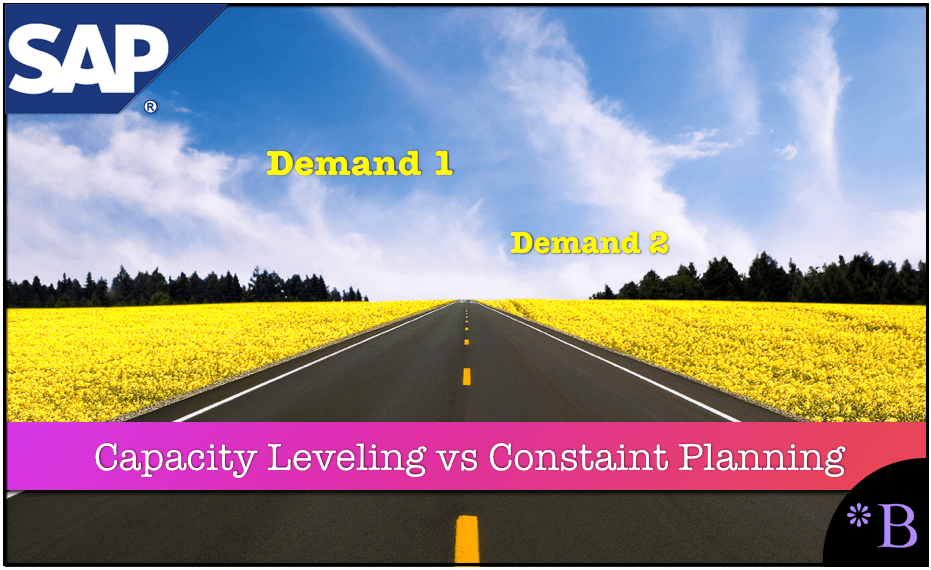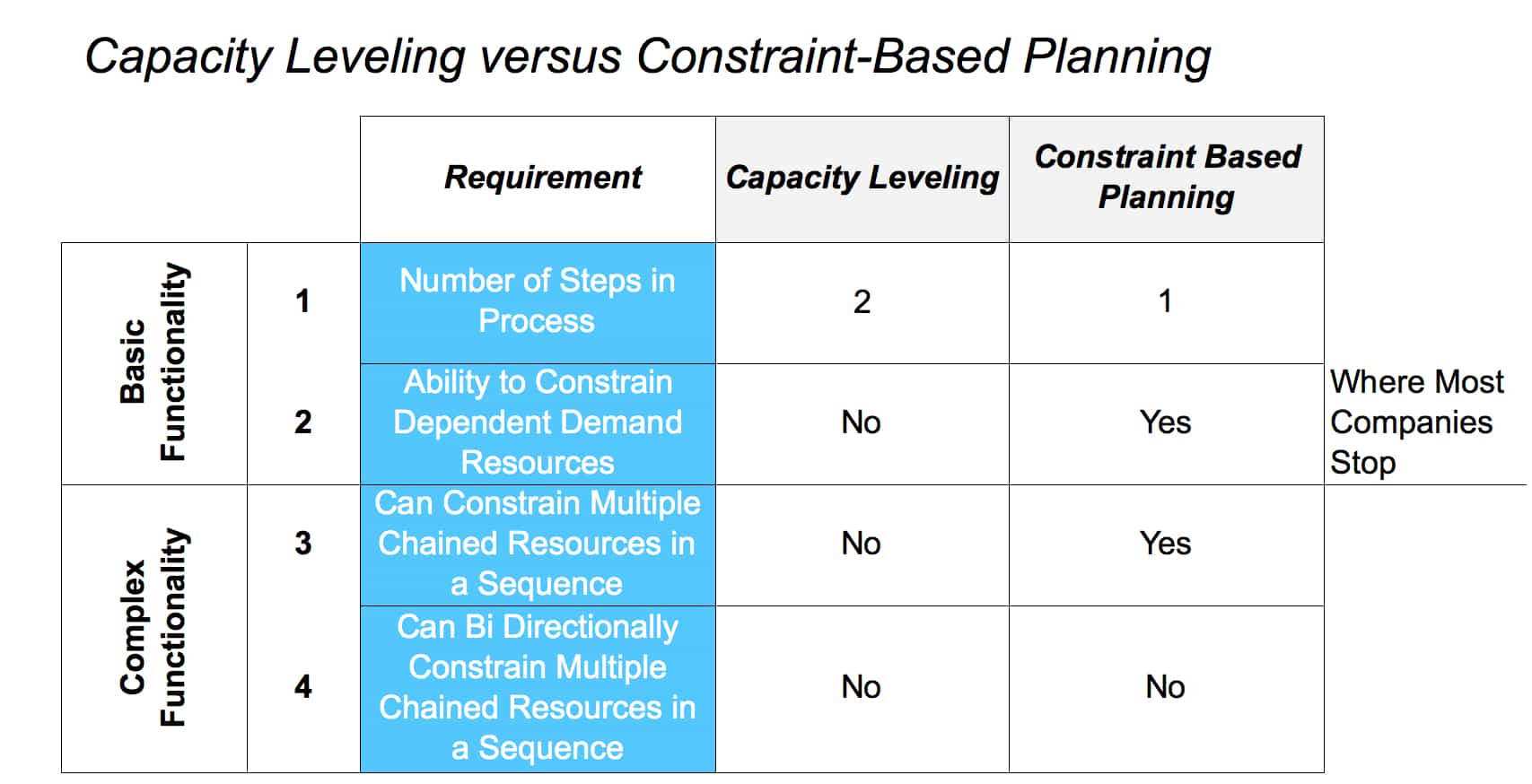How to Understand Production Planning with Constraints Versus Capacity Leveling
Executive Summary
- There are two methods to perform capacity management.
- One is capacity leveling, and the second is capacity constraining.
- Capacity leveling is a two-step method, while capacity constraining is a one-step method.

Constraints Versus Capacity Leveling in Production Planning
Capacity levelling uses unconstrained resources, which allow any load to be placed on any resource. Without something to constrain how demand flows through the supply and production planning during the initial supply plan ), the demand is usually applied to resources based upon the demand data – subtracted from the supply and production lead times. Periods of high demand will lead to overloads on resources, again deducted from the supply and production lead-time. Capacity leveling is the second step where these loads are moved to periods where there is capacity – hence the term “capacity leveling.”
Different Domains of Supply Chain Planning
Different domains of the supply chain have different types of resources that must be modelled. For instance, trucks are a resource for supply planning, while a workstation is a resource for production planning. Generally, only optimizers can run in a constrained fashion. However, this occurs only if the system is configured to manage resources finitely.
One Step Versus Two-Step Planning
In contrast, constraint-based planning is a one-step planning process, while capacity leveling is a two-step process. When constraint-based planning is used, a constraint stops the overloading of resources before it occurs. The constraint is part of the initial supply and production run. There is no “second step” required because, in one step, the system accepts demands and moves the demands to periods where they can be feasibly supplied. A constraint places a hard stop on how much load (i.e., demand) can be placed upon a resource.
Constraint-based planning automatically levels the load by pushing the demand forward or backwards depending upon the rules that are set up for forward and backward scheduling.
A quick comparison between capacity leveling and constraint planning.
Several constraints planing applications are covered in our Software Selection Package for Production Planning and our Software Selection Package for Supply Planning.
